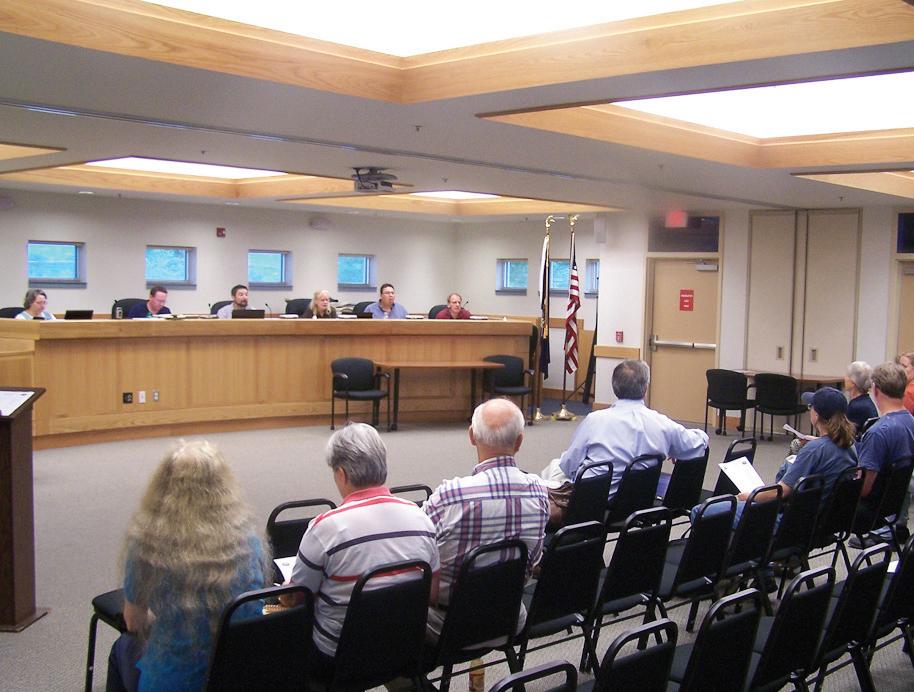
4 minute read
HOW TO USE THE
HOW TO USE THE TOOLKIT
In this section, we outline fifteen tools to expand housing supply and choice. The tools are separated into three categories: Zone Districts, Form and Context, and Processes. Each tool can stand on its own, but often works even more effectively in concert with another tool or two. For each category, an explanation of the tool types have been provided. Additional zoning tools and approaches may follow in future work by the Michigan Association of Planning.
These tools were selected because of their applicability and ability to impact every community that has a zoning ordinance. Advisory Committee feedback also contributed to how the tools were addressed. For example, a more extensive explanation about missing middle housing was discarded due to the extensive amount of resources that are already available.
Each tool includes an explanation of what it is, how it is used, and how it affects housing. Case studies from across the state and country highlight how these tools work in action. Language from other master plans show how the tool can be justified in a community’s vision and goals. In the zoning ordinance examples, excerpts are shared of how ordinance language might be structured in your regulations. Lastly, we present possible obstacles to implementation along with strategies for how to combat them, and technical resources for further reading and review.
Where communities are seeking additional tools to assist with reducing the cost of new construction or preserving existing affordable housing, there are a number of economic development incentives and resources available. When paired with effective zoning reform, these incentives can make a big difference for households who are otherwise priced out of the market.
15 TOOLS TO REFORM ZONING
Zone Districts Form and Context Processes
Collapse Zone Districts Reduce Minimum Lot Width and Area
Rezone for Mixed-Use / Multifamily in Commercial Districts Reduce or Eliminate Minimum Dwelling Unit Size Eliminate or Reduce Elected Body Approval
Expand Administrative Review
Expand Allowable Uses Reduce or Eliminate Minimum Parking Requirements Pre-approved Plans Performance Standards for Uses Missing Middle Housing (Including ADUs) More Flexible Approach to Nonconformities
Density / Height Bonuses Police Power Ordinances for Nuisance
The Comprehensive Plan
A comprehensive (master) plan describes the desired "future state" of a community and establishes the type, character, and density of development that is appropriate in different areas, including where resources should be directed to revitalize or reuse already developed lands. It also provides a framework for identifying important agricultural, natural, and cultural resources to be protected, and for determining what public Investments in streets and other infrastructure will be needed.
Establishing a narrative that embraces housing supply and choice with a greater variety of housing types, lot sizes, and other Toolkit recommendations begins with your community's vision to satisfy current and future housing needs.The mismatch between households and housing stock can be adjusted with policy guidance provided by the comprehensive plan.
It is important that as your plan is created and updated, the public understands the ramifications of keeping the status quo. It is much easier and more cost effective to establish a proactive planning framework that clearly states housing goals for a community so that change over time can be facilitated in a way that is acceptable, or at least tolerable, to the public rather than being forced to react to labor shortages, homelessness, rapid price escalations, and other challenges that government is much less equiped to respond to.
A vision for housing should express how housing is really a system. Various segments are dependent upon one another, so decision-making should focus on overall community goals rather than on a project by project basis. Angst and debate will routinely manifest itself in public hearings in the absence of a collective vision that drives new practices and processes. Piecemeal decisions (the antithesis of long-range planning) are not a useful nor effective strategy to address the housing crisis.
Comprehensive (Master) Plan • Michigan Planning Enabling P.A.33 of 2008 • The plan, along with the Future Land Use Map, is a powerful expression of a community’s aspirations and intentions for the future. • Once it is adopted, it guides the Planning Commission and Township Board/City Commission/Council in land use decisions. It is the “guide for growth.”
Zoning Ordinance • Michigan Zoning Enabling P.A. 110 of 2006 • Zoning may be simply described as one of the means that local government uses to regulate land use and development. • Zoning typically regulates the height, size and location of structures, and other requirements needed to gain development approval and is intended to insure that uses are compatible with one another. • It implements the comprehensive plan.
Relationship Between the Two • The comprehensive plan is a statement of policy. The zoning ordinance is the law that works to implement that policy. • The comprehensive plan refers to future land use. The zoning ordinance affects current land use, but is working towards implementing the vision of the comprehensive plan. • The comprehensive plan describes a vision that could be 10-20 years into the future. It is not always immediately translated into zoning but is implemented over a period of time. The zoning ordinance shows land as it is intended to be used today.










